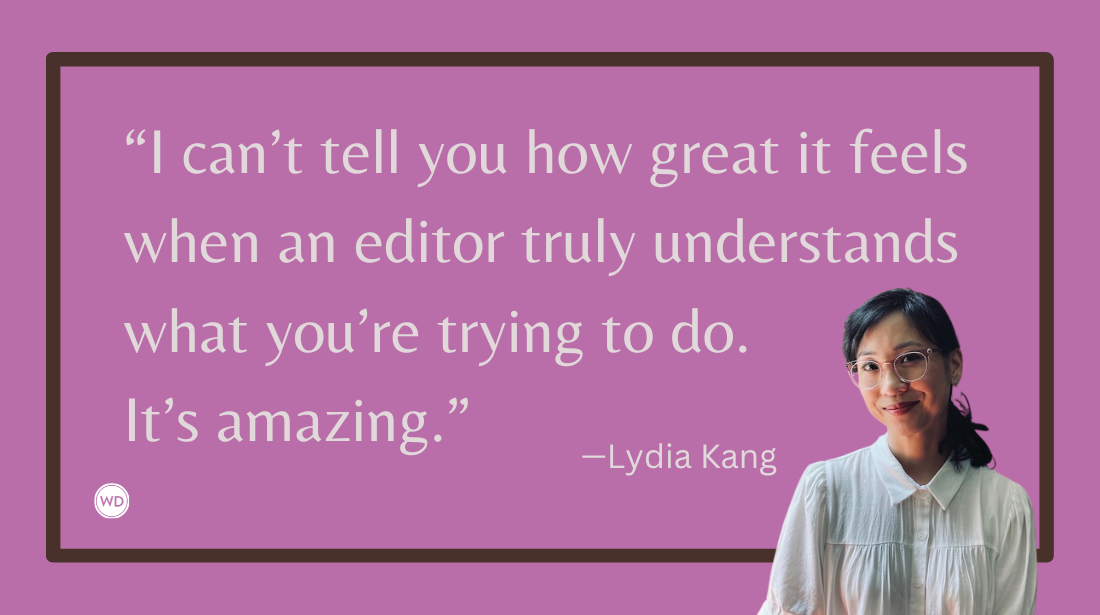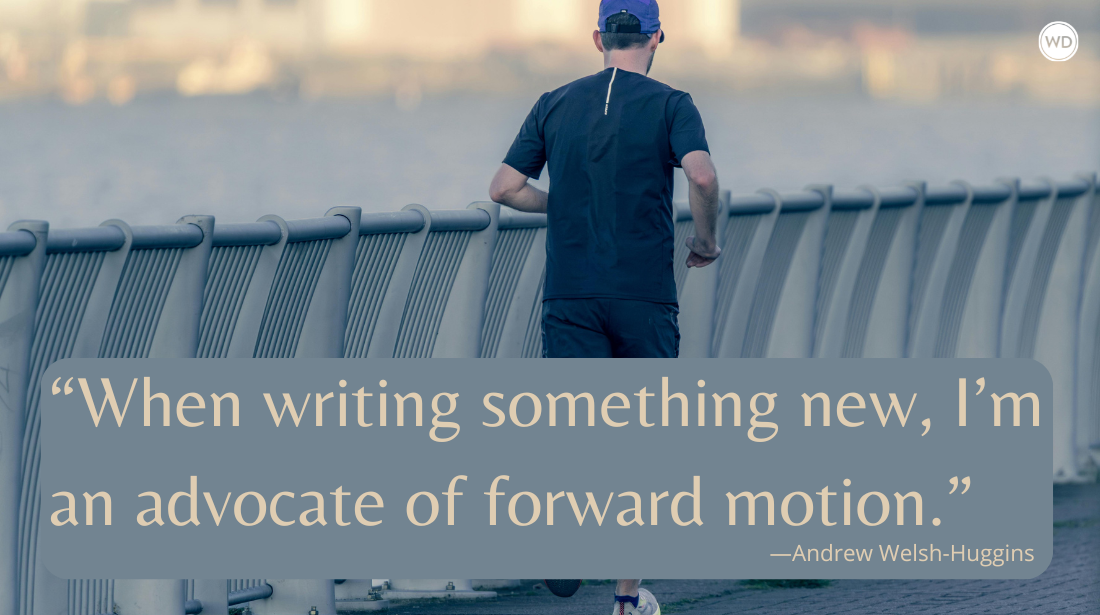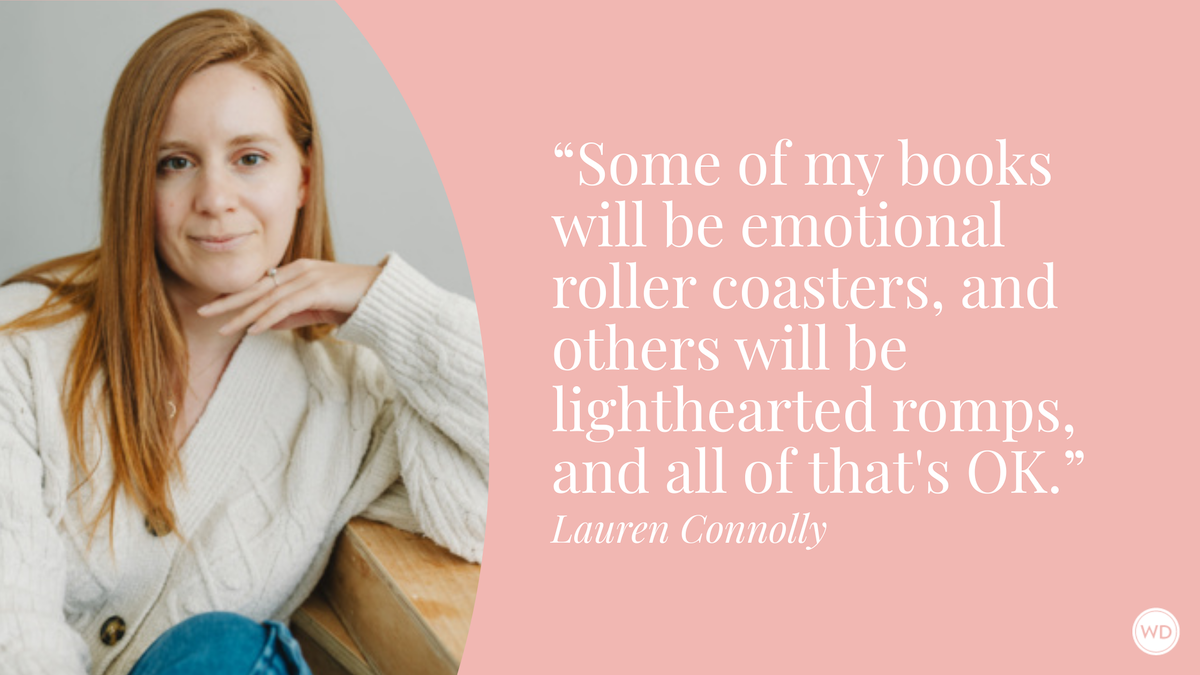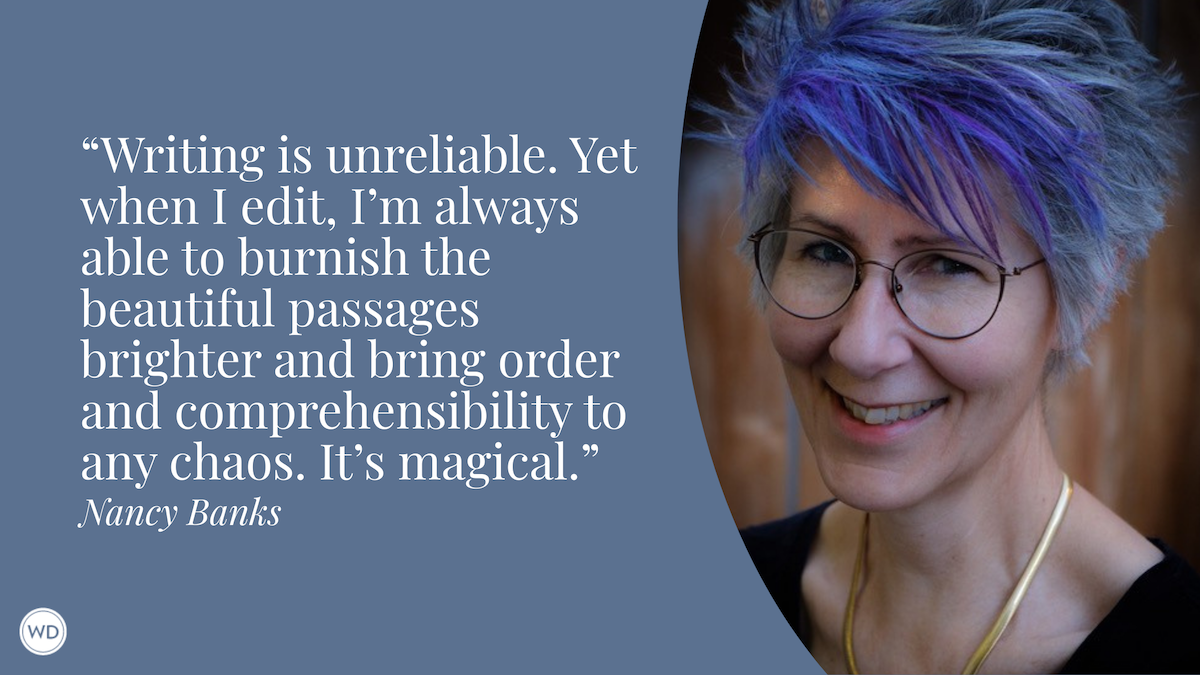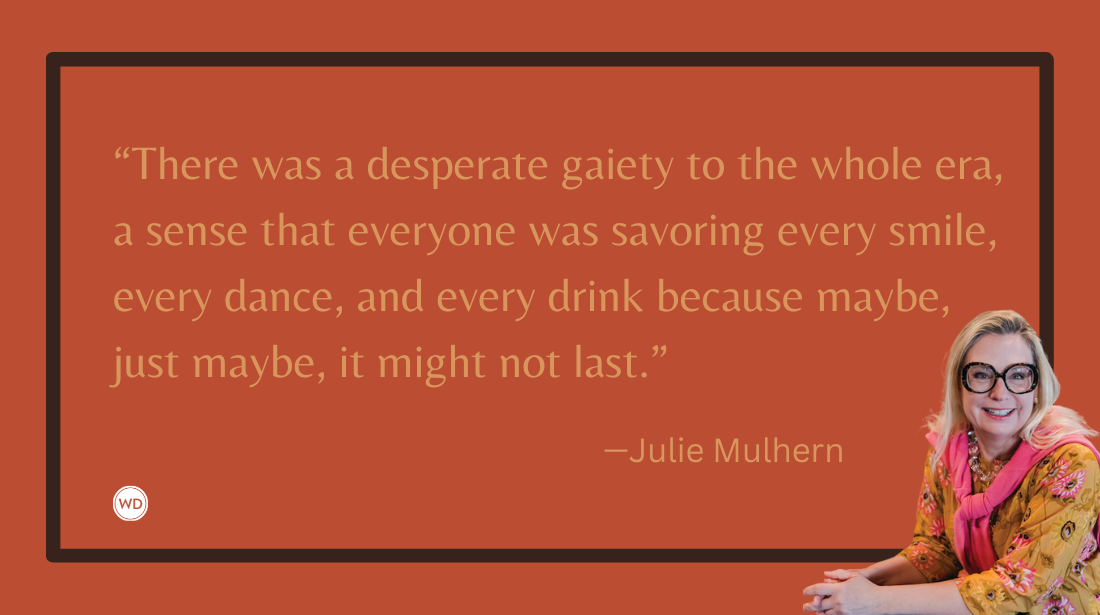Pacing Your Fight Scene (FightWrite™)
Trained fighter and author Carla Hoch discusses how to pace your story’s fight scene and shares three examples from writers who tackle pacing differently.
In our last FightWrite™ post on the WD blog we looked at how to decide which bits of action to write in your fight scene. In this post we will look at how to pace our fight scenes and we will do it in a highly scandalous way: by copying someone else’s style. Yes, I said it, we are going to rip off other writers. Don’t worry, it’s completely legal and surprisingly good for our brains.
In July of last year, I wrote a post on the creativity that can come from copying. In a Japanese study, artists were given three days to create an original painting. On the second day, half of the artists were given a famous painting to copy. On the third day, those artists that spent time copying were actually more creative than those artists who focused solely on their own creation. Weird but true.
Apparently copying gives the brain a chance to think in a new way which can lead to completely new ideas. Copying also allows the brain to consider the work it is emulating on a deeper level and kind of reverse engineer it, see why it works. And that’s what we are going to do today. We will look at fight scenes of three writers known for great action sequences and see what their pacing has in common, why what they have in common works and how we can just copy the tar of out them!
Fight Scene Pacing: What the Pros Do
First up, my writer crush, Chuck Palahniuk and his work Fight Club.
The first fight I get, the guy gets me in a full nelson and rams my face, rams my cheek, rams the hole in my cheek into the concrete floor until my teeth snap off and plant their jagged roots into my tongue.
My second fight, the guy puts a knee between my shoulder blades. The guy pulls both my arms together behind my back, and slams my chest into the concrete floor. My collar bone on one side, I hear it snap.
Fight number three, I wake up and it's time for fight number three..
Number three seems to know what I need and holds my head in the dark and the smother. There's a sleeper hold that gives you just enough air to stay awake. Number three holds my head in the crook of his arm, the way he'd hold a baby or a football, in the crook of his arm, and hammers my face with the pounding molar of his clenched fist.
Until my teeth bite through the inside of my cheek.
Until the hole in my cheek meets the corner of my mouth, the two run together into a ragged leer that opens from under my nose to under my ear.
Number three pounds until his fist is raw.
Until I'm crying.
How everything you ever love will reject you or die.
Everything that you ever create will be thrown away.
Everything you're proud of will end up as trash.
I am Ozymandias, king of kings.
On my punch and my teeth click shut on my tongue. Half my tongue drops to the floor and gets kicked away.
(Sigh) Oh, Chuck, how I do love thee. I have read every fight scene in this book to the point that I can quote them. And they all have something in common. Palahniuk tends to give a sentence of action then goes hard into the sensory experience. In truth, Palahniuk's fights take a supporting role to the physical experience of them. Also, you'll notice that Palahniuk varies his sentence length. Sometimes the sentence is an entire paragraph. Sometimes the sentence is short and stands alone. That forces the pacing of the scene with a sort of push-pull on the reader.
IndieBound | Bookshop | Amazon
[WD uses affiliate links.]
Next up, someone universally loved and who I hope has a house near mine in heaven, J.R.R. Tolkien. Here is an excerpt from The Return of the King: Being the Third Part of the Lord of the Rings.
The orcs, hindered by the mires that lay before the hills halted and poured their arrows into the defending ranks. But through them there came striding up, roaring like beasts, a great company of trolls out of Gorgoroth. Taller and broader than Men they were, and they were clad in only close-fitting mesh of horny scales, or maybe that was their hideous hide; but they bore round bucklers huge and black and wielded heavy hammers in their knotted hands. Reckless they sprang into the pools and waded across, bellowing as they came. Like a storm they broke upon the line of the men of Gondor, and beat upon helm and head, and arm and shield, as smiths hewing the hot bending iron. At Pippin's side Bergerond was stunned and overborne, and he fell; and the great troll- chief that smote him down bent over him, reaching out a clutching claw; for these fell creatures would bite the throats of those they threw down.
Then Pippin stabbed upwards, and thew written blade of Westernesse pierced through the hide and went deep into the vitals of the troll, and his black blood came gushing out. He toppled forward and came crashing down like a falling rock, burying those beneath him. Blackness and stench and crushing pain came upon Pippin, and his mind fell away into a great darkness.
Totally different experience from Fight Club. We see more sentences devoted to action than the sensory experience. This is a mass siege and Tolkien writes it as one might see it from above rather than from within. We don't see a lot of meticulous details of the actual fighting, and Tolkien focuses on the action of two characters rather than the mass siege. Again, sensory details are the main dish here. Far more emphasis is given to the visual of the orcs entering the battle than what they did once in it. What action we are given requires no fight training to understand, which, by the way, is very important. Your reader should not have to know how to fight to follow your fight scene, and you should not aim to teach them. If you have to teach your reader to reach your reader, you might lose them in the midst of the lesson.
Last up, Orson Scott Card and the amazing Ender’s Game, Ender Quintet Book 1.
Bonzo's tight, hard ribs came against Ender's face, and his hands slapped against his back, trying to grip him. But Ender twisted, and Bonzo's hands slipped. In an instant Ender was completely turned, yet still inside Bonzo's grasp. The classic move at this moment would be to bring up his heel into Bonzo's crotch. But for that move to be effective required too much accuracy, and Bonzo accepted it. He was already rising onto his toes, thrusting his hips backward to keep Ender from reaching his groin. Without seeing him, Ender knew it would bring his face closer, almost in Ender's hair; so instead of kicking, he lunged upward off the floor, with the powerful lunge of the soldier bounding from the wall, and jammed his head into Bonzo's face.
Ender whirled in time to see Bonzo stagger backward, his nose bleeding, gasping from surprise and pain. Ender knew that at this moment he might be able to walk out of the room and end the battle. The way he had escaped from the battle room after drawing blood. But the battle would only be fought again. Again and again until the will to fight was finished. The only way to end things completely was to hurt Bonzo enough that his fear was stronger than his hate.
So Ender leaned back against the wall behind him, then jumped up and pushed off with his arms. His feet landed on Bonzo's belly and chest. Ender spun in the air and landed on his toes and hands; he flipped over, scooted under Bonzo, and this time when he kicked upward into Bonzo's crotch, he connected, hard and sure.
Talk about action packed! Lots of movement here. But notice that Card breaks it up by going into the minds of the fighters. He will devote a few sentences to action then back away to give the reader a breather. And if you notice, Card chooses verbs that are double-duty such as slapped, slipped, thrusting, lunged, bounding, jammed, stagger. Verbs like these keep the scene moving while also giving sensory details. Writer’s, don’t let your verbs be lazy. Make them carry some of the groceries. And don’t let them call in an adverb to do what they can do on their own.
What We Can Learn
Palahniuk gives just a little action, maybe a sentence or two, then punctuates it hard by diving deep into the physical sensations of the fight. Tolkien puts the reader at the scene of the fight, in the midst of the mayhem as a whole, without asking them to keep up with movements of too many individuals. When he does focus on actual fight maneuvers, he gives a long sentence or two then backs away for more description. Card, backs away from the fight after, at most, three sentences, to go into the heads of the fighters.
In the last FightWrite™ post, I wrote that you should give your action sequences three comic book panels at most. This is why. Each of these writers doesn’t go beyond three bits of action before backing away. While I haven’t spoken to any of these writers (Chuck, I love you. Call me.), I can tell you that having smaller bites of action keeps the reader in the scene. One, when you are forced to use less action sequences, you focus on the ones that really matter and those tend to be large movements. It’s easier to visualize large movements. All three authors did that very thing. Copy them. Also, when you are forced to back away after three or less movements before you can begin another sequence, you gotta fill that dead space with something. That something often ends up being sensory details and sensory details are what really stick with readers. Again, all three writers did that as well. Copy them.
What We Probably Already Know
When you are writing a fight scene, it can get overwhelming trying to keep up with the pacing and moving in and out of the action. But honestly, you already legit know how to do this. In natural conversations, we tend to give breaks from the action. Watch any fight scene, doesn't matter how realistic, then tell someone about the fight. It's not likely you will bog the listener down with a million tiny details describing every single move. You will focus on the ones that really caught your attention which are generally the gross movements. And, at some point in the telling, you will probably describe how a fighter responded or bled or what they said. That is natural pacing in a conversation. Try to carry that on to your page. Tell yourself the story of your fight scene out loud. Don’t read it, tell it like a story. Record it and see if you naturally pace the scene verbally as you want to in writing.
What Only You Can Do
There is no one way to pace a fight scene. Every writer has their own voice. I mean, look at how different Palahniuk, Tolkien, and Card are! Until you find your voice, especially in pacing your fight scene, copy the voice of a writer you love, one that just pummels the heck out of a fight scene. If you don’t have a favorite fight scene writer, start with the “three panel pacing.” Pick three actions that would be in a comic panel then back away. You can repeat that pacing style as much as you need in the scene.
Fighting and writing are so similar. Put the two on a Venn diagram and you will see a heap of overlap. One of the greatest is the need to practice. There’re no shortcuts to proficiency. And to develop your own style in both fighting and writing you have to first emulate someone else. I didn’t wake up knowing how to fight or write. Someone taught me a particular way to go about each. The more I practiced in the way I was taught, the more my own style emerged. Copying the pro led to proficiency.
Carla Hoch is the award-winning blogger of FightWrite® and author of the Writer’s Digest book Fight Write: How to Write Believable Fight Scenes. She is a WDU instructor who regularly teaches on the craft of writing fight scenes, action, and violence as well as the mechanics of fighting for writers. Carla is a world champion jiujitsu player and has experience in almost a dozen fighting styles. She lives and trains outside Houston, Texas.




